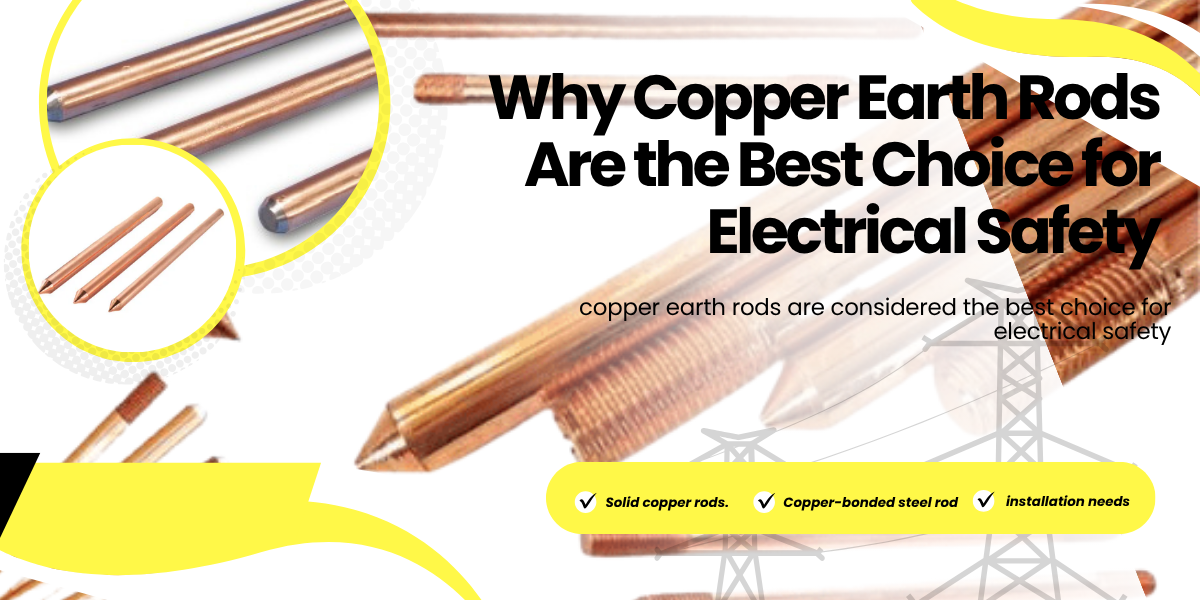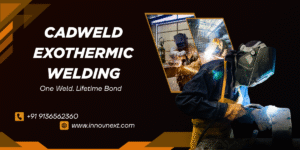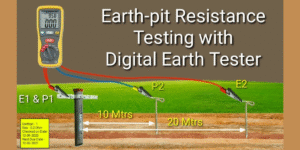Introduction
When it comes to electrical safety, grounding is non-negotiable. A proper grounding system ensures that excess electrical current—whether from lightning strikes, power surges, or faults—is safely diverted into the earth. Among the many grounding solutions available, copper earth rods have emerged as the most trusted and widely used option across residential, commercial, and industrial applications.
In this blog, we’ll explore why copper earth rods are considered the best choice for electrical safety, their advantages over other materials, and tips for installation and maintenance.
What Is a Copper Earth Rod?
A copper earth rod is a metal rod, typically made of steel and coated or bonded with copper, driven deep into the ground to provide a low-resistance path for electrical current.
-
Length: Usually 8–10 feet.
-
Diameter: Commonly 14 mm to 20 mm.
-
Types:
-
Solid copper rods.
-
Copper-bonded steel rods (copper layer bonded to high-strength steel).
-
Threaded or unthreaded rods for different soil and installation needs.
-
Why Copper Is Preferred for Earth Rods
-
High Conductivity
Copper is one of the best electrical conductors, which means it allows fault current to pass quickly and efficiently into the ground, reducing the risk of damage or electrical hazards. -
Corrosion Resistance
Unlike plain steel or galvanized rods, copper resists corrosion for decades. This makes it suitable for all types of soil conditions, including acidic or alkaline environments. -
Durability
Copper earth rods have a longer service life compared to other grounding materials. Once installed, they require minimal maintenance and provide consistent performance. -
Strength and Reliability
Copper-bonded steel rods combine the tensile strength of steel with the conductivity and corrosion resistance of copper, making them strong enough to be driven into hard soil while ensuring long-term safety. -
Compliance with Standards
Copper earth rods meet international safety standards such as IEC, IS, NEC, and IEEE, making them the most reliable and widely accepted solution for earthing systems.
Advantages Over Other Materials
-
Copper vs. Galvanized Steel:
-
Galvanized rods are cheaper but prone to corrosion, especially in aggressive soil.
-
Copper rods last longer and perform better in high-resistance soil.
-
-
Copper vs. Stainless Steel:
-
Stainless steel resists corrosion but is more expensive and not as conductive as copper.
-
Copper offers a balance of performance, durability, and cost-effectiveness.
-
Applications of Copper Earth Rods
-
Residential Buildings – Protects homes from electrical shocks and lightning strikes.
-
Commercial Complexes – Ensures stable power distribution and safety for equipment.
-
Industrial Plants – Critical for grounding heavy machinery and high-voltage systems.
-
Telecommunication Towers – Protects sensitive equipment from lightning surges.
-
Renewable Energy Systems – Ensures safe grounding for solar and wind power setups.
Installation Tips for Copper Earth Rods
-
Site Selection
-
Choose moist soil for better conductivity.
-
Keep rods away from building foundations.
-
-
Depth of Installation
-
Drive the rod at least 8 feet into the ground.
-
In rocky or dry soil, use multiple rods spaced 6–10 feet apart.
-
-
Connections
-
Use high-quality clamps to connect copper conductors to the rod.
-
Ensure joints are tight and corrosion-resistant.
-
-
Testing
-
Measure resistance with an Earth Resistance Tester.
-
Ideal resistance: ≤ 5 ohms (as per NEC/IS standards).
-
Maintenance of Copper Earth Rods
- Inspect clamps and connections periodically.
-
Test grounding resistance every 1–2 years.
-
Replace rods if corroded or damaged.
-
Use soil enhancement compounds in high-resistivity areas to improve performance.





